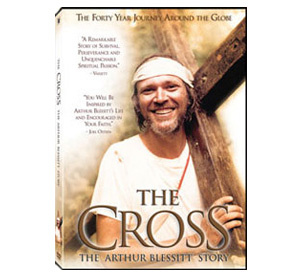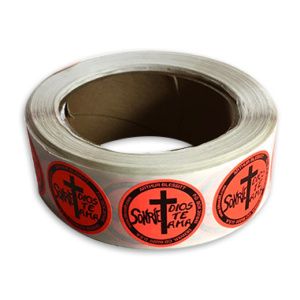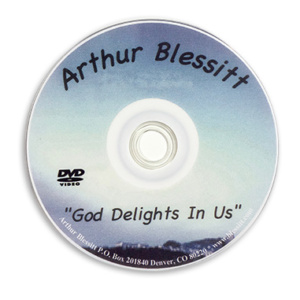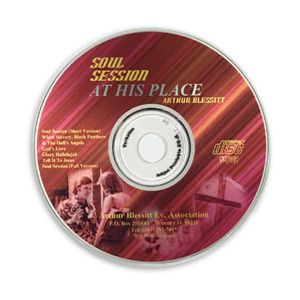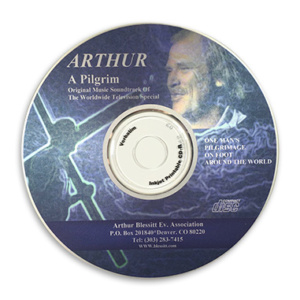MINISTER OF THE SUNSET BOULEVARD
The history of the Sunset Boulevard has been a bad trip, man, a bummer.
The California scene from the beginning was stained by the mark of Cain and the greed of money changers.
Starting in 1769, Franciscan Father Junipero Serra straggled along the California coast, and established his famous twenty-one missions. In the process he appropriated millions of acres of land from several local tribes of peaceful, docile Indians, becoming, in effect, the overseer of California’s first land grab.
Today shiny-faced suburban kids are trundled off on weekends to visit the “picturesque” missions. But the missions weren’t picturesque for the thousands of Indians, forced laborers all, who built them under conditions as heartless as those suffered by the African Americans who constructed the palaces of southern planters. For a dawn-to-sundown workday, the Indians were paid with a flacon of cheap wine to keep them drunkenly submissive. Thus, the Franciscans were California’s first drug pushers.
Ignoring the true spiritual and material needs of the Indians they had come to “civilize,” the Franciscan fathers turned the missions into vast income-producing enterprises. The San Gabriel Mission alone, a pioneer conglomerate, was a baronial complex of seventeen huge ranchos, stocked with gigantic herds of cattle, horses, sheep, and crop fields, worth almost $80 million. Of the three thousand Indians who worked at the mission, hundreds died of starvation and disease. Those who tried to escape were brought back-and it didn’t matter if they were dead or alive.
The Franciscans eventually lost their lands to a series of buccaneer Mexican governments, who gave high-caste dons horizon-hurdling ranchos. Half the land was supposed to revert to the Indians, but when the dust settled the grandees had it all. They ruled as divine-right kings. One, brandishing an exquisite pearl-handled pistol, shot and killed malefactors while sitting astride his horse after impatiently enduring five-minute “trials.”
When California became a state in 1850, the dons in turn lost virtually all their land. Whoring, gambling, and borrowing money at spectacular interest rates from rapacious American loan sharks finished them off. What few acres were left from their original grants were stolen from them by U.S. courts.
The Don who owned the Rancho Rodeo de las Aguas was so poor he couldn’t raise five hundred dollars in cash and eight hundred dollars in notes, the price for which it was sold-one of the most stunning bargains in real-estate history. Out of this rancho eventually was carved Beverly Hills and the Sunset Boulevard.
In 1900 the Boulevard was a tranquil lemon orchard. But with the invention of the automobile, paved roads began ringing the orchards and the growers were gradually forced out.
The area then went through a series of booms and busts, all masterminded by real-estate sharks. What should be very loosely termed the “golden age” of the Boulevard was ushered in during the 1920s following the establishment of the movie industry in Hollywood. Speakeasies violating the prohibition law and illegal gambling spots sprang up. So did the mansions in Beverly Hills. Through the 1950s, fancy gin palaces like Ciro’s, Trocadero, and Mocambo were playgrounds for Hollywood royalty who arrived in conspicuously chauffeured limousines. The newspapers and fan magazines chronicled in wearying detail the almost daily drunken brawls of movie stars fighting over the affections of a prostitute or tearing a club apart after a succession of losing spins on the roulette wheel.
The sensational stories turned the Boulevard into a tourist mecca, and a generation raised on the shallow verities of Hollywood celluloid came to gawk at their screen favorites. To accommodate them, the Boulevard blossomed with more gin mills, expensive restaurants, high-priced antique and specialty shops, and burlesque houses.
Such was the nature of the Boulevard’s “golden age.”
Next the Boulevard became home to multistoried apartment buildings with lofty rents, banks and savings and loan emporiums, and mini-skyscrapers that housed the West Coast headquarters of numerous large corporations and the flesh-peddlers who called themselves agents, public relations men, and talent scouts.
By 1964, according to the West Hollywood Chamber of Commerce, the Boulevard and adjacent arteries had become “targets in the land rush for business and apartment sites.” The area was “pulsating with incomparable progress.”
Property fronting the Boulevard (a mere twelve blocks within the 2.1-mile radius of West Hollywood, which, because of a zoning quirk, is an unincorporated city and technically independent of Los Angeles) was going for from twenty to twenty-five dollars a square foot.
But in 1965 the revolution hit.
From the far comers of the nation came an invasion of young people, lured to the Boulevard by easy access to drugs, the phony glamour image conjured by the movies, television, trash novels, and the West Hollywood Chamber itself. The kids, arriving by the thousands, made it a new ball game. They were “strange” kids, mini-skirted teeny-boppers and bearded young men.
The chilling word was heard on the Boulevard: hippie!
The Boulevard suddenly was no longer “pulsating with incomparable progress.” Big money paused and considered before making new investments. Which way would the Boulevard go? Was the hippie thing a fad? Would the straights keep power?
Nobody knew.
Two giant luxury hotels were erected. One soon failed and was turned into a convalescent home for well-heeled senior citizens. The other, built by Gene Autry, was sold to a chain.
The kids, meantime, kept pouring in, tragically searching for meaning and excitement at the end of a needle or in a variety of pills, most of them eagerly manufactured and supplied by America’s blue-chip pharmaceutical houses.
Now one thing became clear: The kids were on the Boulevard to stay, this was their scene, this was where it was happening.
Befuddled, angry businessmen, watching their profits drop at the alarming rate of $3 million a year, took their problems to Los Angeles County Supervisor Ernest E. Debs, a bland, talkative politician whose district included the Boulevard.
Debs blew his cool. “I’m pushing hard for more arrests,” he said with a singular lack of imagination. “We will never surrender the area to a bunch of wild-eyed beatniks.”
The supervisor’s push for “more arrests” didn’t discourage the kids; it only brought more of them out to defy authority. So the businessmen called on the law.
Helen Lawrenson, in a Cosmopolitan magazine article, wrote acutely:
“The resultant squawk has been less a result of moral disapproval than of pocketbook pain. Faced with the adolescent invasion, the solid citizens (or “property owners”) who never turned a hair at the presence of gangsters and gamblers, panicked and called on the police to protect them. Help! Officer! Here come the teeny-boppers.”
Pressured by Boulevard merchants and restaurant owners to do something about the weekend traffic jam that was keeping away the older cash customers, the Los Angeles police began harassing the kids by means of a curfew law that says no one under eighteen can be on the street after 10 p.m.
The curfew was as a match to gunpowder. It forced confrontation and an explosion.
To protest the ordinance, more than a thousand kids gathered along the Boulevard on an electricity- charged day in November, 1966. They were defiant, determined young daredevils who would not be put down by threats or intimidation.
The police blew their cool, too. If they had spoken softly while carrying their big nightsticks, the ragged ranks of young people would have disbursed once their rage had been spent.
But The Man overreacted.
Helmeted and batoned, the law waded into the defenseless ranks of young people. Gushers of blood stained the Boulevard as the Establishment collided head-on with the vocal but weaponless kids and lead-weighted batons crashed against the skulls of fourteen-year-old girls and sixteen-year- old boys.
The kids had turned out solely to protest the curfew as discriminatory, humiliating, and unconstitutional. Their position might have been arguable, might even have been completely wrong, but the police didn’t want to be bothered with the “technicality” of freedom of assembly, a part of the heritage that supposedly undergirds American democracy. The Man was under orders to sweep the streets clean of the kids. It was done efficiently. Forty-seven were busted in what proved to be a significant confrontation, significant enough to be reported in detail the next day on the front page of the Establishment’s most influential voice, The New York Times.
A wave of sympathy for the kids gathered and broke. Moral and financial support flowed in from Woolworth-heir Lance Reventlow, Peter Fonda, and other celebrities. The American Civil Liberties Union, which since 1920 has fought impartially for Nazis, Communists, members of minority communities, and anyone else whose rights were in dispute, volunteered its services to defend the kids who’d been thrown into jail.
News of the senseless brutality of The Man spread through the high school and college campuses and the crash pads faster than booze at a corporate Christmas party.
The kids would not be cowed. The next weekend more than five thousand turned out for another confrontation. Again the law could have avoided mayhem by letting the crowd vent its anger via annoying but harmless shouting, a peaceful method of protest.
Instead, everything short of tanks and bazookas was marshaled to beat down the rebellious young. And beaten down they were. One hundred were busted and pushed, sobbing and screaming, into waiting police vans. Innocent bystanders were also hurt in the melee. Two ministers, observers only, were assaulted and clubbed to the ground. Another observer, an elderly college professor, asked a sheriff’s deputy, “Where can I stand to watch the demonstration?” For an answer he was knocked to the sidewalk and kicked. Peter Fonda, on hand with a camera to film the action, was grabbed, handcuffed, and roughhoused into a squad car. The law was striking out blindly, without rhyme or rationality. Fonda later made a prophetic comment: “The police and the moneybag merchants may think they can win by force, but they never will.”
The curfew didn’t work, so the Establishment’s next gambit was to impose a no-loitering law. It was so rigidly enforced that brothers meeting accidentally on the Boulevard for the first time after twenty years of separation could not stop and greet each other, much less spend time reminiscing.
The Boulevard merchants and the law didn’t see it that way. They had failed to note the most important factor of the youth rebellion: More than half the population of the world, according to a United Nations survey, is now under twenty-four! Not since the Creation have young people dominated the globe. By sheer force of numbers alone, the kids could not be denied.
Concluded Miss Lawrenson in her article: “Like it or not, they are going to set the style, call the tune and run the show. So the Sunset Boulevard scene is not just an isolated freaky community problem. It’s not only what’s happening, it’s a guideline to what’s coming.”
And so, despite the curfew and the no-loitering restriction, the Boulevard had been captured by the young.
As I cruised the area, witnessing and talking to hundreds of kids, I saw a bottomless mission field. These young people, the majority of them, were of my own generation and, disastrously, were already turned on by synthetic thrills instead of the genuine thrill of knowing Christ.
The tons of publicity engendered by the riots backfired on the Boulevard merchants and the police. Thousands of other restless, disaffected youngsters came, all of them hungering for action. Almost none of these young people were from poverty-stricken or welfare families. They were the sons and daughters of the middle class. What had gone wrong in the Establishment’s scheme of things?
Why couldn’t the presumably desirable standards of the parents be grafted on to their children? Why were the kids disenchanted? Why were they dropping out? Why were they now turning the Boulevard into a teen-age skid row? Why was an army of young people giving up their chance for life before they had a real chance to live?
Parents from Los Angeles to Long Island, Dallas to the Dakotas, puzzled, pondered, and wrung their hands while patting themselves on the back for giving their kids everything (“They didn’t have to struggle through the Depression like we did”). But had they given them everything? Had they given love, understanding, patience? Had they given them the immutable truths, morality, ethics, and values found in the abundant pages between Genesis and Revelation?
As the new lodestone for the nation’s young, the Boulevard was a cruel hoax and an avaricious host. The versatile merchants, those who did not move out, set up new businesses to quickly part the kids from their money and meet any need they had, so long as a profit could be turned. Everybody was soon earning big bread except the barbers. Even straight-owned drugstores sold kids narcotics from doctors’ prescription blanks that they knew were stolen and forged.
For most of the kids, the pain they found on the Boulevard was equal to or worse than anything they had endured at home. Caught in a vise, they easily succumbed to the drug culture, thereby compounding the tragedy of their lives.
When the kids came, the twenty-nine Protestant, Catholic, and Jewish churches of West Hollywood held back despite the claim of the Chamber of Commerce that “religious leaders of West Hollywood make a major contribution to the culture and character level of the area.”
The ministers, priests, and rabbis did not want to ruffle the feathers of comfortable congregations. The churches said to the hippies, “Cut your hair; take a bath; drugs are bad for you.”
Unfortunately, it wasn’t that simple. Such sermonizing didn’t even dent the minds of the kids. It was the same pap they’d heard at home. And so they ignored West Hollywood’s twenty-nine churches.
It became obvious to me that since the kids wouldn’t come to the churches, the church must come to the kids.
I had a stake of $100 and, given the costly rents, finding a place to live near the Boulevard was a formidable three-day hunt. We finally located an apartment we could afford in that friendly kibbutz, the Jewish section of Los Angeles only a few minutes’ drive from Sunset Boulevard. Fairfax Avenue, the main artery of the Jewish area, was out of sight. Bearded Talmudic scholars dressed in black mingled with the two-buttoned straights from nearby CBS Television City who came to Cantor’s and other legendary delicatessens for bagels, bean soup, and thick pastrami sandwiches. The pungent smell of freshly baked bread spilled over into the streets, a doughy dream. The people of Moses were the first to give a Baptist family a warm welcome in the “City of the Angels.” It would not be the only occasion when Jews would come to our aid.
To support us I preached at revivals in San Bernardino, San Diego, Phoenix, and elsewhere but I always whipped back to the Boulevard as soon as possible.
I had already discovered that it was easier to win souls on the Boulevard than in Mississippi, Montana, or Nevada. Contrary to what I had heard, the young people of the Boulevard were not anti- God, they were simply against the rigidity and a lot of the nonsense of organized religion and the big churches. You couldn’t capture these kids for Christ with taffy pulls, stringing popcorn balls, and choir practice. What they wanted was the essence of God, His relevance to their lives, His personal meaning to them.
Perhaps because I was under thirty, it was natural that the kids trusted me. I began to identify completely with them, except that I was dropping Matthew, Mark, Luke, and John instead of pills. I learned their language, and scores were brought to the Lord in conversations that began, “Hey, man, I know you’re strung out. But there’s a better way. Let me turn you on to a trip with an everlasting high. Jesus, man, He loves you. He won’t hassle you. He’ll put it all together.”
I also let my hair grow longer and learned a quick lesson in dress. A collar or a business suit wouldn’t get you anywhere. The first time I walked into a trip room I wore a tie and suit. The heads panicked. They thought I was a narc (narcotics agent) out to bust them. After that I switched to turtlenecks and psychedelically patterned shirts, slacks or bell bottoms, and sandals.
Then came the beads. About three months after hitting the Boulevard, I met a teen-age girl on the street who was hung up on dope. I prayed with her and she came to Christ. Then I bought her a meal and we talked for hours.
“You’ve given me so much,” she said, “I don’t have a thing to give you except this.” She took off her beads and put them around my neck. “Tell anybody who asks that I gave you these beads like you gave me a new life.”
That episode was to be repeated countless times, and I was soon collecting anywhere from ten to fifty strings of beads a month. A tie no longer meant a thing to me, but each string of beads was a living testimony.
Street-witnessing was not enough. What the kids needed was a place to rap among themselves, a place where no one would hassle them. They needed a sandwich and a soft drink or coffee. They needed a place of their own where they could bear the word of Christ.
It was inconceivable to me that none of the churches were filling this need. The churches were meeting the rising tide of the youth rebellion by simply ignoring it, not only on the Boulevard, but throughout the country. The churches kept their eyes closed. Clergymen did not witness, but shuffled papers, kept a sharp eye on the budget, and planned ever-bigger buildings. I preached at a church in Mississippi with an $80,000 organ! And I saw a church in Texas protected by an intricate burglar alarm system.
?Many of these cavernous, expensive buildings were open only a few hours on Sunday morning and a short time during the week for social functions.
To generate a spiritual rebirth in America and shepherd the lost to Christ, the churches should have a welcome mat out twenty-four hours a day with ministers working in three shifts.
Churches, at the least, should keep bar hours. Where can the lonely, frightened, and troubled go when the gin mills and the nightclubs finally close? With an all-night open-door church operation thousands upon thousands could be converted.
Churches of all denominations have failed dramatically in reaching out to the kids. Tragically, most churches are run like profit-making corporations, when the only profit a House of God should be concerned with is the richness of winning souls, changing lives, and helping people.
Most rents were still high on the Boulevard, up to one thousand dollars a month for a small building. (At that price, the eighty-thousand-dollar church organ in Mississippi would have kept a ministry on the Boulevard going for almost seven years!)
I finally found a rundown motel that had been converted into an office building at 853 1/8 Sunset Boulevard. I rented one room, barely twelve feet wide, but the rent was only sixty dollars a month.
I moved in a desk and an old couch. Friends donated a two-burner hot plate and a small refrigerator. Our altar was a beat-up coffee table covered by a white towel with an open Bible on it.
I passed out cards along the Boulevard, talked to kids and invited them to the modest headquarters of the Arthur Blessitt Evangelistic Association.
The kids came in numbers we couldn’t handle. Some nights hundreds would crowd in and out. Most of the time I managed to serve soup and crackers. All the time we served tracts and pocket-sized New Testaments designed with a psychedelic cover. And I preached at least twice a night.
Christ works constant miracles. His voice was now being heard on the Boulevard for the first time. I didn’t meet a single kid who wouldn’t listen. One of the positive things about the hippies was their total honesty and lack of pretense. They were open-minded. Not all were ready for Jesus, but the number who were finding answers for the first time in their young lives through Christ was amazing.
The kids on the Boulevard love nicknames and labels. Soon I was being called The Hip Preacher, The Night-Life Minister, The Hippie Chaplain, and The Turned-On Preacher.
But most of the kids called me The Minister of the Sunset Boulevard. That was the label that stuck, and it’s become as precious as my certificate of ordination. Like the beads, the title the kids gave me meant something. It was their gift, their way of saying, “You’re a groove, you’re cool, don’t split, make the scene.”
I determined to keep making the scene as the Minister of Sunset Boulevard as long as there was need. The way things were going the Boulevard could have used a thousand ministers. Man, I thought, I’d like to pile-drive my way into every seminary classroom in Southern California and push those preachers hiding behind their concordances to do God’s work where it counts, on the streets, to witness, to be an instrument of the saving power of Christ, to show the lost where it’s at.
It was soon apparent that I needed a bigger, much bigger, location. And it had to be right on the firing line, at point-blank range in the center of the Boulevard where Jesus Christ could once again confront the money changers.



